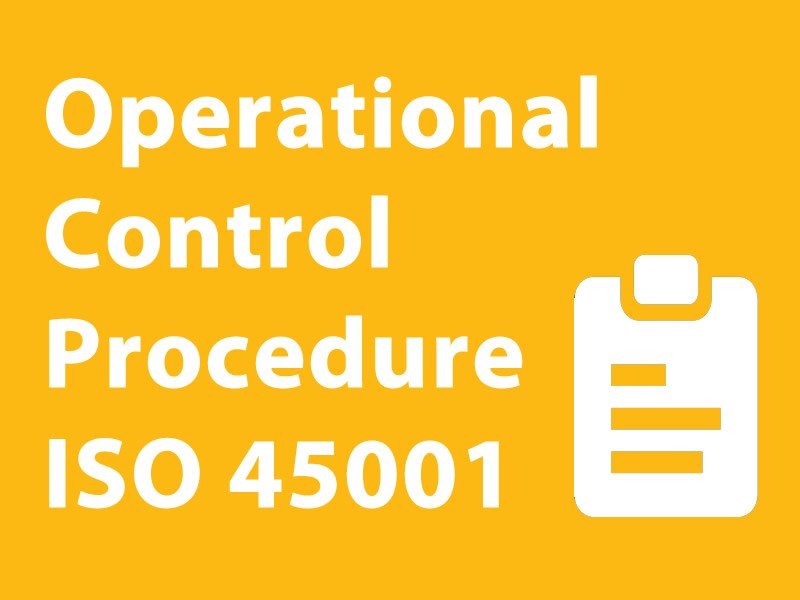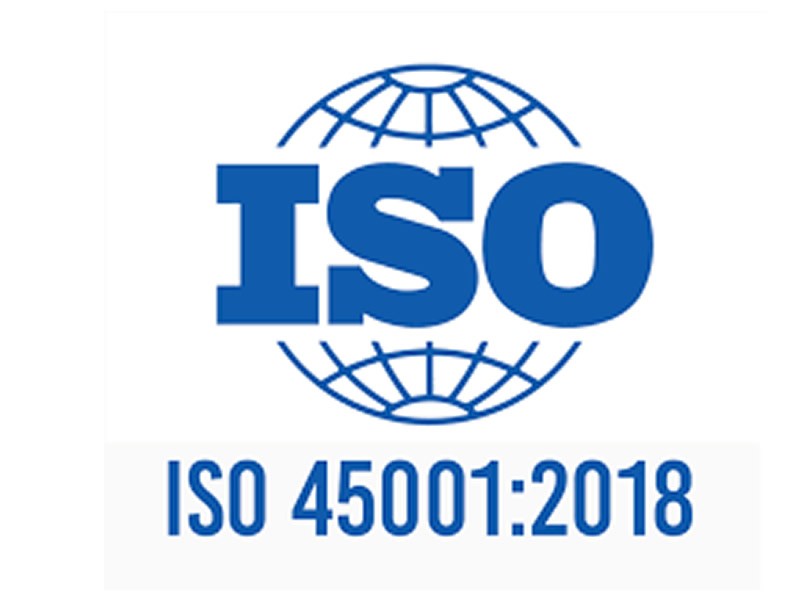Insight Blog
Agility’s perspectives on transforming the employee's experience throughout remote transformation using connected enterprise tools.
8 minutes reading time
(1646 words)
Operational Control Procedure Examples, Templates & More!
Documented procedures ensure that the necessary steps and activities for controlling risks are completed correctly.
Regulations and compliance seem to rule today's workplaces and industries - whether they come from the federal government or other regulatory bodies or from industry best practices.
Operational control procedures may be necessary to maintain compliance and ensure the safety of both workers and consumers, but they can also be a bureaucratic nightmare to manage, so it's important to think carefully before implementing them.
They are inaccessible and cumbersome because of their length and complexity, so these documents are rarely used. A company can get the benefits of operational control procedures while minimizing administrative burdens.
More importantly, intranet software can play an important role in operational control procedures.
What is an operational control procedure?
Controls and processes that allow a business to operate are known as operational control procedures. You may use your environmental management system to control environmental impacts by using these tools. Common sense may have guided the development of existing regulations, which may have been in place for some years. However, in order to improve your company's operational performance, you will likely have to adjust some of your company's operational control procedures.
Make sure you consult with the relevant staff and experts. If they're unwilling to alter their work habits, point out the advantages for them, the company, and the environment as a whole.
The work carried out during the initial review, and your environmental aspects and impacts should allow you to select which components of your business you need to focus on. When evaluating and revising your internal operational control procedures, make sure they will help you achieve your goals.
You should look at what controls you require for regular conditions, abnormal conditions, and crises. A manufacturing process may necessitate operational control procedures, processes for monitoring equipment, and emergency plans and procedures, among other things. Moreover, reducing your supply chain's environmental impact may necessitate collaboration with your suppliers and contractors.
What is the operational control procedure's example?
It is the process of ensuring that certain activities are completed successfully and efficiently through operational control or task control. Operational control is concerned with the management of specific tasks or operations. Rather than assessing the overall efficiency of the business, it focuses on the scheduling and control of specific jobs within the shop. It focuses on the management of individual inventory items rather than the overall inventory management.
Activities that can be programmed fall under the purview of operational control. Inventory levels and procurement schedules can be optimized based on information such as the expected demand, cost of storage, cost and time of production, and the potential loss from not being able to fulfill an order.
Examples of operational control include automated plants, production scheduling, inventory control, order processing, payroll software, payroll accounting, cheque handling, or updates for computers like windows 11. Modern payroll software streamlines compensation processes by automating tax calculations, time tracking, and benefits management, reducing human error and increasing efficiency. More and more actions may be subject to operational management as a result of the development of new technology. For example, the foreman's intuition was once used to create the production schedule, but now it is based on linear programming.
Analogies between technical, electrical, and hydraulic systems, for example, are reasonable and valuable in operational control systems. It's important to understand concepts like network balancing and optimization, as well as feedback. For example, an operational control system can be compared to a thermostat that senses changes in temperature and turns the refrigerator on and off. People aren't like thermostats; thus, these analogies don't function well when it comes to a management control system. Operational control system designers can use mathematical and physical knowledge to develop models and decision rules. There is no similar information base for a management control system's designer.
Operational planning and control procedure
It is important to follow operations design, operations planning, and management since a designed service must be transformed from a simple design to an actual product. The goal of operations planning and control procedures is to make sure that the manufacturing process runs properly on a daily basis. Tools and platforms that allow real-time tracking and communication can also enhance control and transparency within an organization, similar to how specialized Magento Hosting solutions ensure operational stability for eCommerce businesses.
The importance of quality cannot be overstated in this process since it should be one of the primary performance metrics against which any activity is evaluated. It is possible to ensure the quality of the entire process by including quality procedures, systems, and techniques into operational planning and management. In order to grasp the concept of operational planning, one must first grasp the meaning of the word "operations." Section 8 of ISO standards outline the requirements for running the management system on a daily basis. Operational planning, then, is concerned with how the management system's processes are planned, implemented, and controlled.
In order to achieve the management system criteria of each standard, you must design, implement, and control the processes. Operational processes that are explained in clause 7 are always linked back to the prior planning activities that are explained in clause 6 in this approach. Planned control actions are to be identified in terms of risks, opportunities, and other management system components according to clause 8.1. These control activities are later implemented in an organization's day-to-day operations.
👉 Learn more: Fundamental When Selecting a Project Management Tools
Operational control procedure ISO 45001
International Organization for Standardization (ISO) published the ISO 45001 standard in March 2018 as part of a larger effort to update and align all of the specification standards for the management of environmental, energy, health safety, and quality. The ISO 45001 standard requires a three-year transition period from the date of its publication. Priority is given to control choices that are more effective in preventing work-related injury and illness when designing and developing operational controls.
Raw materials, hazardous substances or materials, equipment, goods, and services must all be subject to controls to ensure that they match the occupational health and safety system's specifications. An evaluation, selection, review, improvement, and replacement of external suppliers in accordance with stated expectations requires a procedure. The control system processes must be recorded if it is to be more successful.
Occupational health and safety management system regulations must be satisfied by all contractors and their employees; thus, your business must design and maintain systems to ensure that these criteria are met. The OH&S criteria for contractor selection are part of these processes.
There has been an increase in the importance of outsourcing and, therefore of maintaining control over processes, products, and services that are outsourced. The management system must specify the scope of the control to be implemented.
The selection of providers and the evaluation of their performance are both essential components of any outsourcing process, as are the mechanisms through which problems generated by external suppliers that may impair occupational health and safety performance can be addressed.
An organization must identify potential threats to its operations and devise a strategy for dealing with them. Such situations can arise at any time, including outside of regular business hours, as a result of both natural and human-made factors. The occupational health and safety hazards associated with identified emergencies must be evaluated.
ISO 45001 procurement
The new standard's "Operation" section in ISO 45001 also tackles procurement, which is particularly significant because corporations acquire raw materials and products, procure services and technology, and may outsource processes. Procurement is a vital part of a company's occupational health and safety management system if it has control or influence over contractors and outsourced procedures. Procurement processes must be established and maintained at the bare minimum in order to ensure compliance with a company's occupational health and safety management system.
The rules and expectations for dealing with contractors are established by the occupational health and safety management system. There is more to managing contractors than the way in which they perform their duties at a business location. Every step of the procurement process must be devoted to ensuring that the contractor's competence and occupational health and safety performance are taken into account when evaluating and selecting the best fit for the job. If expectations are not fulfilled, there must be a mechanism in place to guarantee that the organization and the contractor continue to improve their performance. Corrective actions may be necessary if a contracting party fails to fulfill expectations or fails to demonstrate continuous improvement.
Conclusion
You cannot ignore operational control procedures in today's business environment. They assist organizations in ensuring uniformity, compliance, and consistency. They're also a wonderful tool to keep track of and pass along organizational information. It is, however, possible that operational control procedures will be difficult and time-consuming to manage. Using the intranet to efficiently manage your operational control procedures will ensure that your company reaps the many benefits that these procedures have to offer. Setting up a series of operational control procedures was an initial investment, and it's crucial to get the most out of it. As a result, an intranet like AgilityPortal is the ideal platform to accomplish this.
Categories
Blog
(2640)
Business Management
(325)
Employee Engagement
(212)
Digital Transformation
(177)
Growth
(120)
Intranets
(119)
Remote Work
(61)
Sales
(48)
Collaboration
(37)
Culture
(29)
Project management
(29)
Customer Experience
(26)
Knowledge Management
(21)
Leadership
(20)
Comparisons
(6)
News
(1)
Ready to learn more? 👍
One platform to optimize, manage and track all of your teams. Your new digital workplace is a click away. 🚀
Free for 14 days, no credit card required.

















